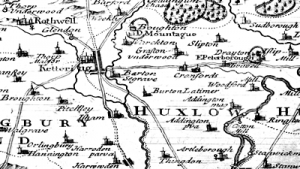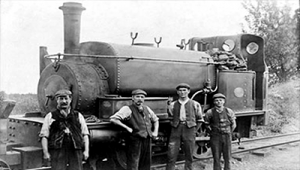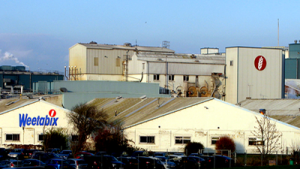- About our town
-
-
About our town
Find Burton Latimer on the map – and discover its history, notable features and European twin-town links
-
-
- Local Amenities
-
-
Local amenities
Find out about the local amenities and facilities in our town – and how to use them
-
-
- Things to do
-
-
Things to do
Eat, drink & stay in Burton Latimer – plus local walks, groups to join and activities to get involved with
-
-
- Places to go
-
-
Places to go
Plan a visit to nearby cinemas, concert halls, museums, galleries, historic houses, gardens and public parks
-
-
- About our town
- Local Amenities
- Things to do
- Places to go

A brief history of Burton Latimer
Burton Latimer has a rich history going back over 1,000 years. Much of this has been documented by the town’s Heritage Society.
Burton Latimer has a rich history going back over 1,000 years. Much of this has been documented by the town’s Heritage Society.
Early days
 Burton Latimer started as a small settlement alongside what was to become the main road from London to Carlisle. It was first mentioned in the Domesday survey of 1086, but before the Norman Conquest it was known as ‘Burtone’.
Burton Latimer started as a small settlement alongside what was to become the main road from London to Carlisle. It was first mentioned in the Domesday survey of 1086, but before the Norman Conquest it was known as ‘Burtone’.
Ancient history
There is some archaeological evidence of previous activity in the area during the Bronze Age, the Iron Age and the Roman period. At the time of the Domesday Book in 1086, Burton was held by Guy de Raimbeaucourt, and a mill is recorded beside what is now the Weetabix site.
Lords of the manor
Over the following centuries the manor became divided into two holdings, eventually passing to the Latimer family, based at what is now the Hall, and the Plessey family at what is now the Manor House next to the church. The holdings were united in the 1760s but the title of Lord of the Manor was not unified until the 19th century.
19th century development
 By the time the Common Land on the Wold was enclosed in 1805, the area was in an economic depression. Agriculture was not flourishing; lacemaking and weaving were also in decline.
By the time the Common Land on the Wold was enclosed in 1805, the area was in an economic depression. Agriculture was not flourishing; lacemaking and weaving were also in decline.
Ironstone quarrying
The major changes came about fifty years later, with the arrival of the railway – which connected Burton to London and the industrial midlands. Then, large ironstone deposits were found in the district and quarrying began around the village.
From quarrying to light-industry
In the last part of the 19th century, two new industries arrived. By 1885, the first four clothing factories had opened, followed in 1898 by the first shoe factory, and Burton grew rapidly to become a small, thriving light-industrial town.
Around its edges, the quarrying carried on, until the pits were worked out in the early 1920s. Some extraction of limestone and clay still went on in the northwest of the town, on the area now occupied by Morrison’s distribution centre. By the early 1980s however, it was over.
Modern industrial growth
 The 1950s saw further expansion of factories like Weetabix and Alumasc. However, by 1980 the clothing and shoe industries had been killed-off by cheap foreign imports and the high cost of employing so many people to make the goods.
The 1950s saw further expansion of factories like Weetabix and Alumasc. However, by 1980 the clothing and shoe industries had been killed-off by cheap foreign imports and the high cost of employing so many people to make the goods.
Into the new millennium
By 2000 the town’s new bypass and the building of the A14 made the town attractive again as a manufacturing and distribution centre.
High-profile national firms like Versalift, Alpro Soya and Abbeyboard have based themselves on the north side of town.
The future
Burton’s population is scheduled to increase to about 10,000 over the next ten years – a far cry from the small village of poor agricultural workers, weavers and lacemakers two hundred years ago. Burton Wold, the former area of common land to the east of the town where they once grazed cattle and collected firewood, is now home to what is currently the largest inland wind farm in the country.


